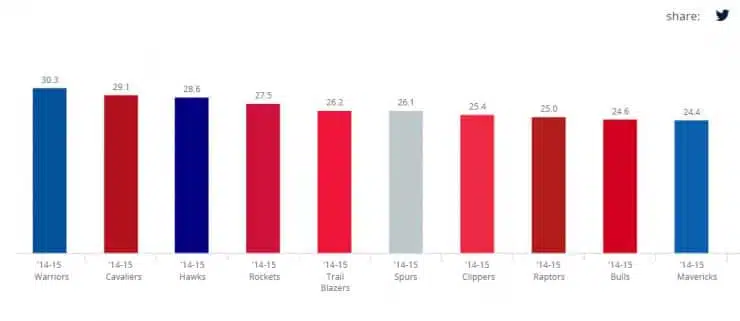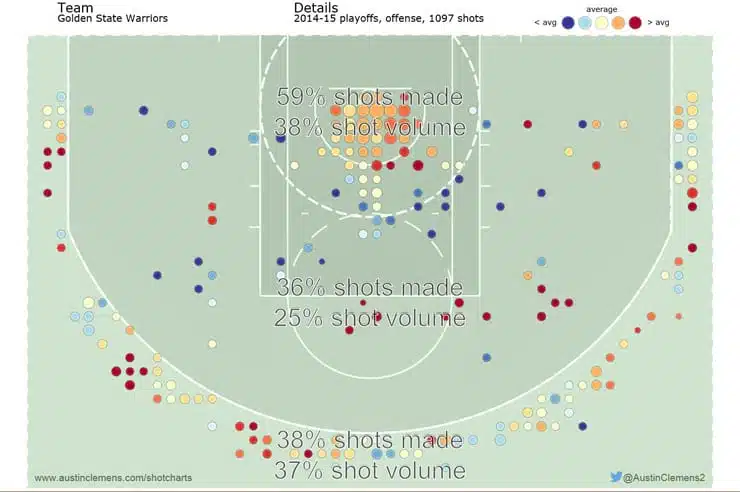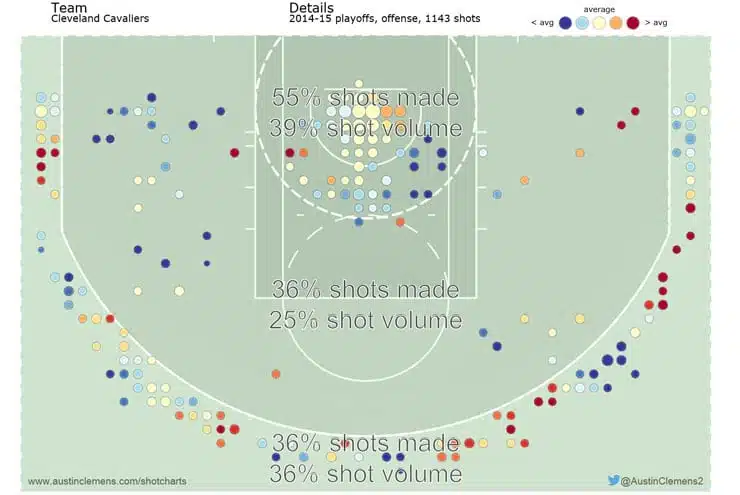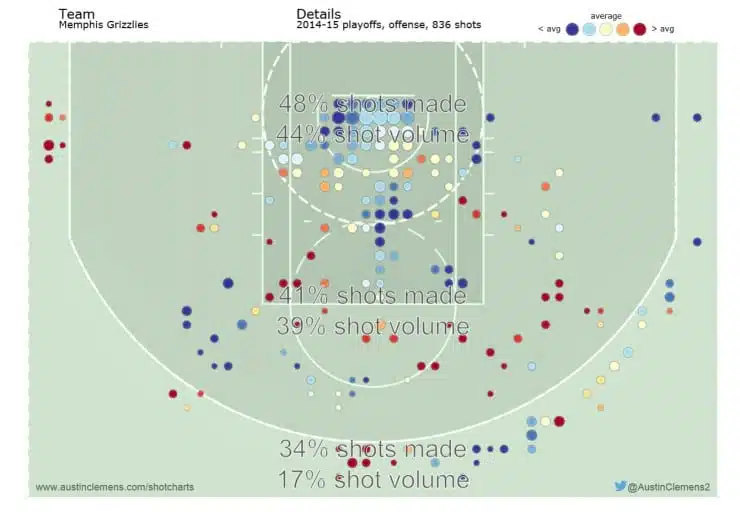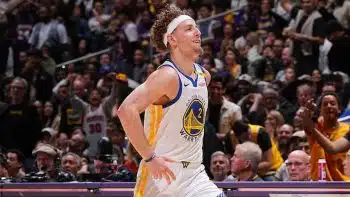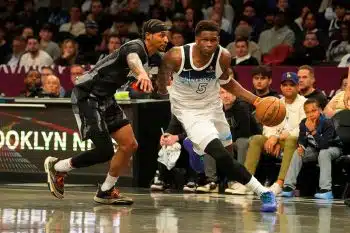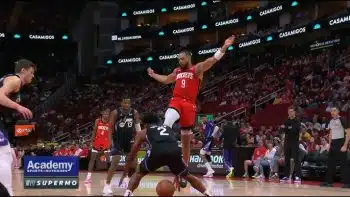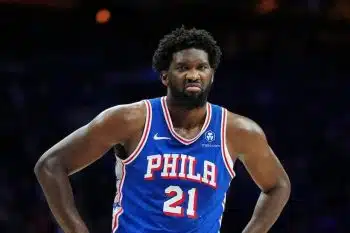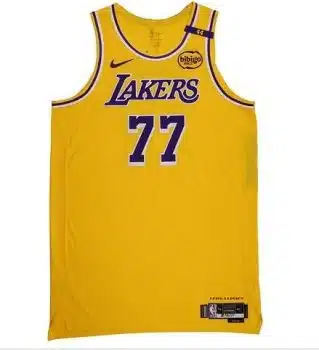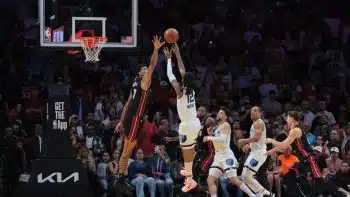NBA
NBA Saturday: “Jump Shooting” Teams Can Win
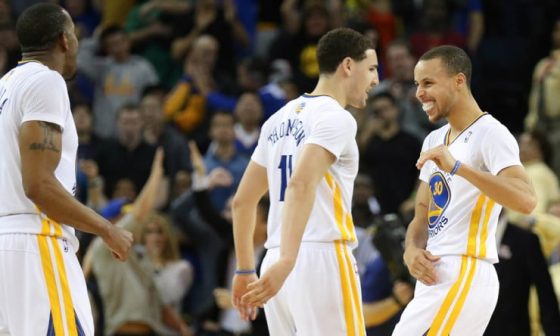
There is an ongoing debate in the NBA between those who believe “jump shooting” teams can’t win a championship and those who do. Charles Barkley serves as the most vocal spokesperson for skeptics, constantly voicing his doubts during TNT’s pregame and post-game coverage of NBA games. Also in Barkley’s camp is New York Knicks president Phil Jackson, who also just so happens to be arguably the greatest coach in NBA history.
On May 10, Jackson took to Twitter to get an update on the state of three-point shooting in the playoffs. Jackson’s tweet was written when the Golden State Warriors and Atlanta Hawks were both down 2-1 in their second round matchups. The point he was making is that three-point shooting isn’t the “be all end all of basketball” and that teams should not “disvalue the 2pt shot.”
Another vocal skeptic is Los Angeles Lakers head coach Byron Scott. Before the season started, Scott told reporters that he didn’t believe shooting three-pointers was a formula for winning a championship.
“I don’t believe it wins championships,” said Scott to Baxter Holmes of ESPN Los Angeles. “(It) gets you to the playoffs.”
Scott’s comment started this discussion, which has dragged on throughout the season. So, as we wait for the beginning of the NBA Finals (which starts on June 4), let’s take a look at some of the numbers from these playoffs, as well as the regular season, and try to determine which side, if any, is right.
First, we need to be clear about what constitutes a jump shooting team. There seems to be ambiguity here as some people refer to teams that shoot a lot of three-pointers when they say jump shooting teams, while others refer to teams that simply shoot a low number of shots at or near the rim. According to SportsVU, the NBA’s advanced camera system that tracks and collects a ton of data from each game, a jump shot is any shot outside of 10 feet from the rim.
Well, that definition certainly isn’t what people like Barkley and Jackson have in mind when they refer to jump shooting teams. Instead, in general, they are referring to teams like the Houston Rockets and Golden State Warriors, who averaged the first and fourth most three-point attempts per game during the regular season. Otherwise we would need to talk about the Memphis Grizzlies and Charlotte Hornets as jump shooting teams considering the fact that the Grizzlies took the most shots from 10-14 feet (8.6), while the Hornets took the most shots from 15-19 feet during the regular season (18.4).
The teams that shot the most three-pointers per game during the regular season, in descending order, were the Houston Rockets, Cleveland Cavaliers, Portland Trail Blazers, Golden State Warriors, Los Angeles Clippers, Philadelphia 76ers, Atlanta Hawks, Dallas Mavericks, Toronto Raptors and Phoenix Suns. Among this group of teams, eight made the playoffs (Scott was right), five advanced past the first round, four made it past the second round and both teams that made it to the Finals are in the top five in three-point attempts.
But, as we hear so often, the postseason is a lot different than the regular season. And that is where the point of contention usually arises. Pundits like Barkley say that the game slows down, shooters go cold at some point, that jump shooting teams can’t be trusted to win a seven-game series against equally talented, non-jump shooting teams and that teams need a dominant post player to get a basket in crucial moments to win a championship.
Nevertheless, the Warriors are 12-3 in the postseason and have in fact increased their three-point attempts per game in the postseason to 30.3, which leads all playoff teams. Similarly, the Cavaliers are up to 29.1 three-point attempts per game, and are 12-2 in the postseason. Here is a graph to help illustrate which teams have been taking the most three-pointers per game during the postseason.
Graph courtesy of Statmuse.com/nba
What should stand out from this graph is the fact that the top four teams in three-point attempts during the postseason are the same four teams that made it to the Eastern and Western Conference Finals. What is less obvious, but similarly true, is that three of the four Conference Finalists increased their three-point attempts per game from their regular season average. The Rockets were the one exception, taking a whopping 5.2 fewer three-point attempts in the postseason, which has a lot to do with the return of a healthy Dwight Howard and the loss of Patrick Beverley and Donatas Motiejūnas to season-ending injuries.
While the top four teams all happen to shoot the most three-point field goals per game, that does not mean that shooting a barrage of three-pointers will necessarily result in postseason success. There is correlation here, but not exactly causation. The main point that is being made, however, is that relying heavily on three-pointers is not fatal to a team’s championship aspirations, as some would have you believe.
In fact, shooting a lot of three-pointers isn’t what really matters. What matters is the way in which a team generates those three-pointers, and where the rest of that team’s shots are coming from.
Phil Jackson followed up his rhetorical question about three-point shooting by stating that three-pointers are fine, but they can’t be the shot that an offense is primarily looking to generate and that penetration is the first principal of offense. Jackson is in large part right, though the idea that teams should not look to create three-point shots as a primary offensive weapon is, at least somewhat, off base.
Pick and rolls are often used as a way of creating a two-man game with the target being an open shot at the rim, a mismatch on a switch, or perhaps an open pull-up jumper. For example, with this year’s Clippers, the high pick and roll between Chris Paul and Blake Griffin usually created a devastating scenario where, often times, Griffin would charge to the basket for an athletic finish at the rim, or Paul would pull for a jumper from the right elbow (a spot where he is lethal), or Griffin would be open for a jumper right above the free throw line, or Paul would pass to an open shooter like J.J. Redick at the three-point line.
Out of the pick and roll, the three-pointer was likely the third, maybe even fourth option, which should please Jackson. But the Clippers also ran Redick through a lot of backdoor screens to specifically get him space to launch three-pointers, especially early in games. On these sets, the three-pointer was the intended result. But that isn’t really a bad thing, especially in the case of the Clippers. Anyone who has watched them closely since last season knows that the Clippers’ offense goes from good to great when Redick is on the floor, running opponents through screens and launching three-pointers. Doing so creates spacing, generates ball movement and forces defenses to shift accordingly. It was the loss of this element, among a lot of other things, which stifled the Clippers in the postseason.
The point is, however, that whether a team purposely tries to generate open three-pointers, or they are a contingency plan when an offense’s first action is disrupted, they are a necessary and lethal part of an efficient offense in today’s NBA.
This is especially true when we consider how teams have learned the importance of efficient shot distribution. The notion that the Warriors are a jump shooting team does a disservice to the fact that, during the regular season, they were tied for second in the NBA in point scored in the paint per game. And guess who was second? The Houston Rockets, another team considered a jump shooting team.
Both the Warriors and Rockets understand that the best shots a team can take (other than free throws) are at the rim and open looks from beyond-the-arc. And neither team abandoned this formula after the regular season, which you might expect to happen considering how often analysts talk about the differences between regular season and postseason play.
In addition, the Cavaliers have also adopted this sort of approach to shot distribution during the postseason. Though the Cavaliers rely on a heavy dose of isolation brilliance from LeBron James and Kyrie Irving, Cleveland is still getting a nice amount of shots at the rim and from beyond-the-arc.
Here are some shooting charts to illustrate where each of these teams’ shots have been coming from throughout the postseason.
As you can see, there is an eerie similarity in the shooting characteristics of both of these teams. Both teams, by definition, are jump shooting teams, but are both creating a significant amount of scoring opportunities at the basket instead of from midrange.
Now let’s compare the charts above to the Memphis Grizzlies’ postseason shooting chart.
Shot charts courtesy of austinclemens.com/shotcharts/
The Grizzlies have two of the best post-up big men in the league in Zach Randolph and Marc Gasol. Yet the Warriors and Rockets were able to shoot almost as much, or more, of their shots at or near the rim than the Grizzlies and both teams hit a much higher percentage in that area. This has a lot to do with LeBron James and Stephen Curry slicing through defenses and finding teammates at the rim, or finishing on their own. But however the shot is generated, whether out of the post or not, these teams show that shooting a lot of three-pointers and not having a dominant post player doesn’t mean a team has to be inept at taking and making shots at the rim. Part of it has to do with having a superstar attacking the rim, another part of it is having lethal three-point shooters spacing the court, keeping opposing defenses honest.
One of the biggest differences between the two teams in the Finals and the Grizzlies is that Memphis was shooting nearly 15 percent more from midrange, while taking roughly 19 percent less from beyond-the-arc. Despite making these two-point field goals at a high percentage, the Grizzlies’ offense, both because of pace and lack of three-point shooting, simply can’t compare to the offensive firepower of the Warriors and Cavs.
All of this is to say that you can be a three-point shooting team and still win at a championship level. More important than having a dominant big man to dump the ball into 40 times or more a game is generating efficient shots, which inherently includes three-pointers. As Seth Partnow of Nylon Calculus pointed out recently, as the rate of three-point shots per game has increased since the 1997-98 season, so too have the shots taken at and near the rim. The shots that are being replaced are those long two-pointers that teams like the Memphis Grizzlies, Los Angeles Lakers and New York Knicks have taken a heavy dose of this season (which partially explains why the Lakers and Knicks finished 23rd and 29th in offensive efficiency this season).
Most of this should be readily apparent to anyone that is willing to recognize that the NBA has changed since the days where Barkley was dominating teams in the post. But that recognition should go both ways. Zach Lowe of Grantland explained recently that the post-up game is still alive and can be a major weapon for modern NBA offenses, especially as a way to offset the aggressive switching that teams employ against pick and rolls. In fact, Lowe states that front-office “gurus” believe that the ability to make effective passes out of the post could “become the NBA’s next great undervalued skill, even as the league appears to veer away from post-ups.” And with a new crop of promising centers entering, or already in the league, such as Jahlil Okafor, Karl-Anthony Towns, Rudy Gobert, Hassan Whiteside, Jusuf Nurkic and so on, a shift back to the post seems even less far-fetched.
But until that shift happens, the three-point shot is, at the very least, correlated with championship teams.
Perhaps the simplest and best evidence of that is the fact that the two teams meeting each other in the Finals shot the most three-pointers per game in the postseason. Sure, having Stephen Curry, LeBron James and strong supporting casts helps get you to this point. And these teams certainly aren’t in the Finals as a direct result of shooting more three-pointers than all of their opponents this offseason. But one of these teams will win this series, so no matter what, a jump shooting team will win the championship this season. With that in mind, how can we still say that jump shooting teams can’t win championships?
